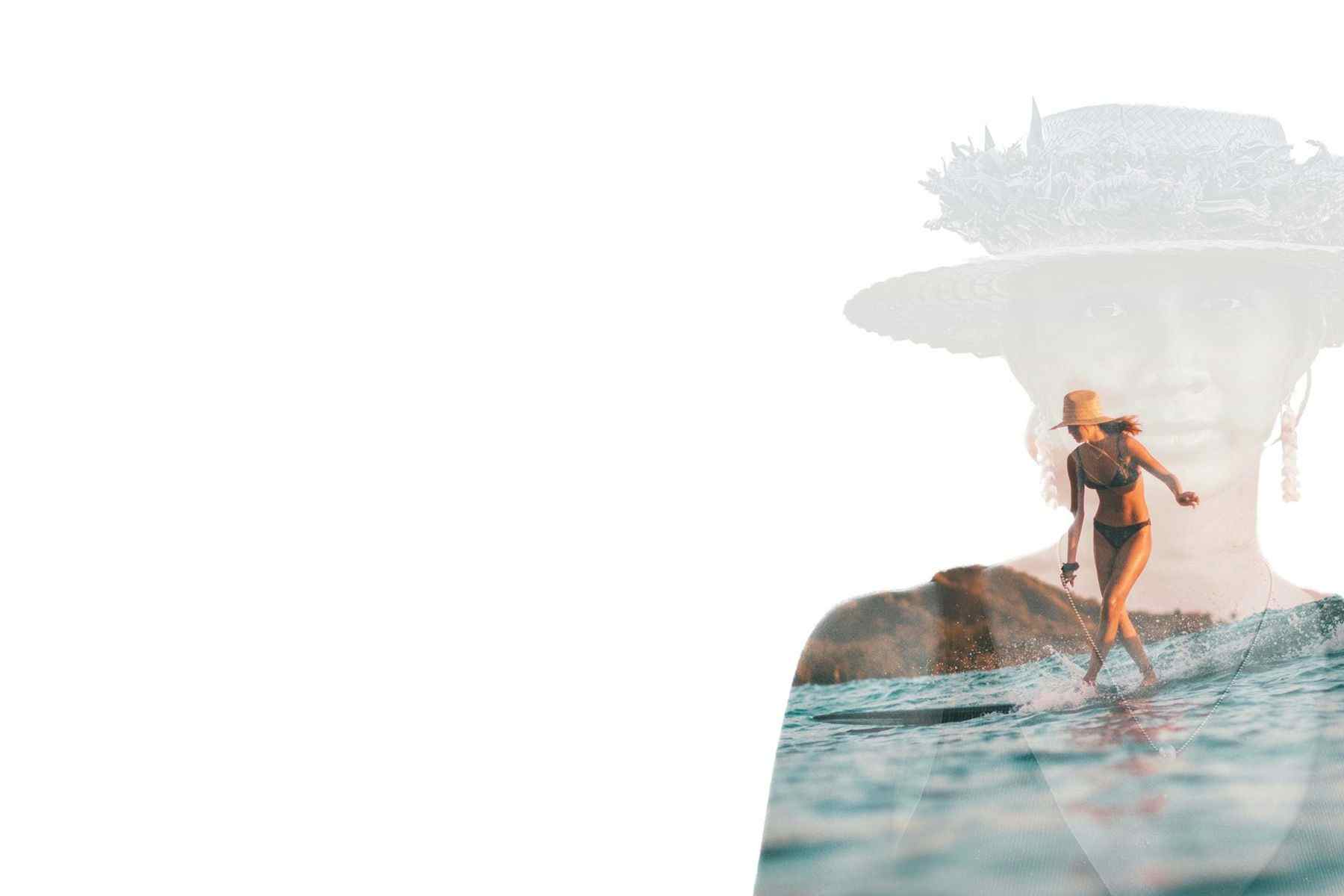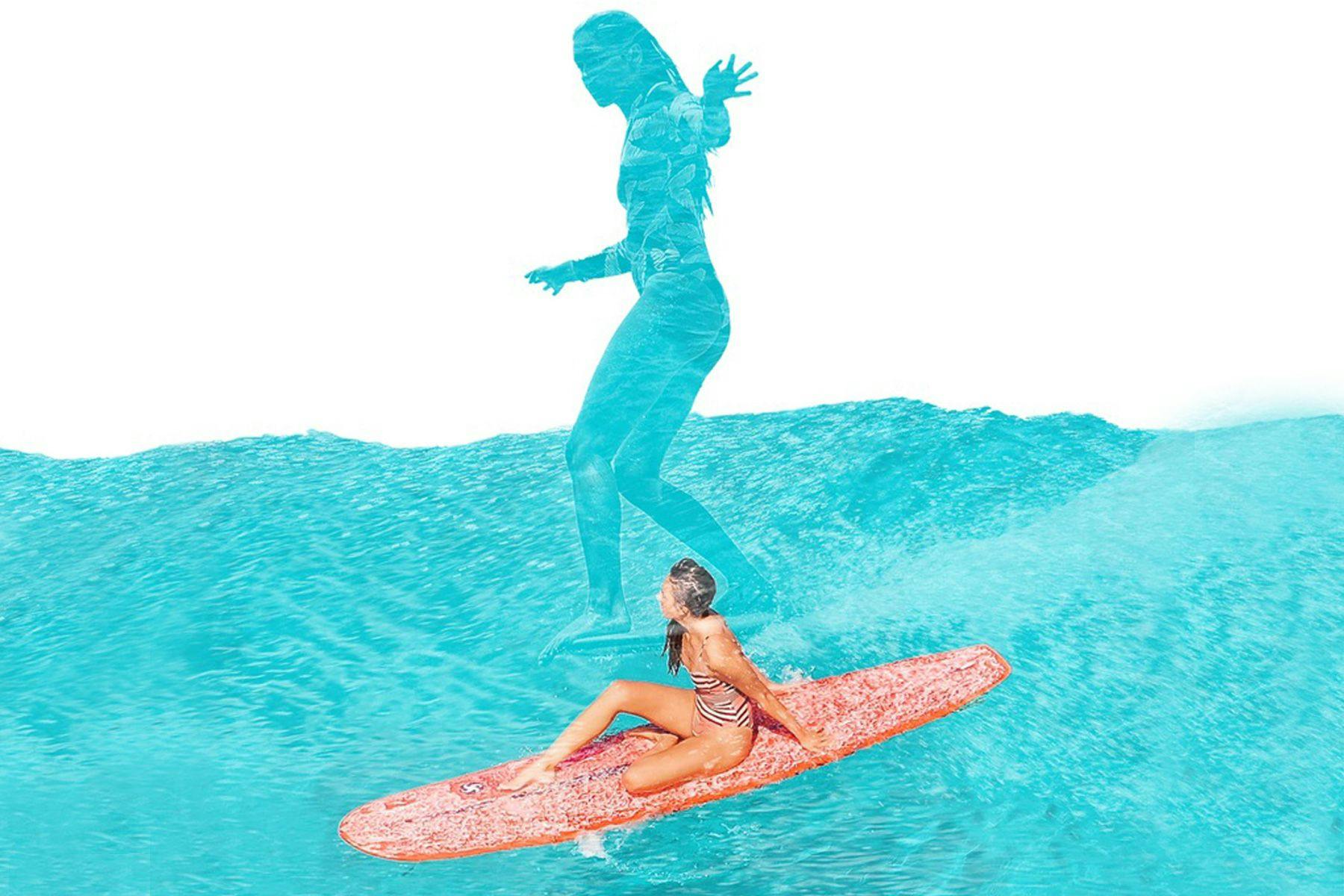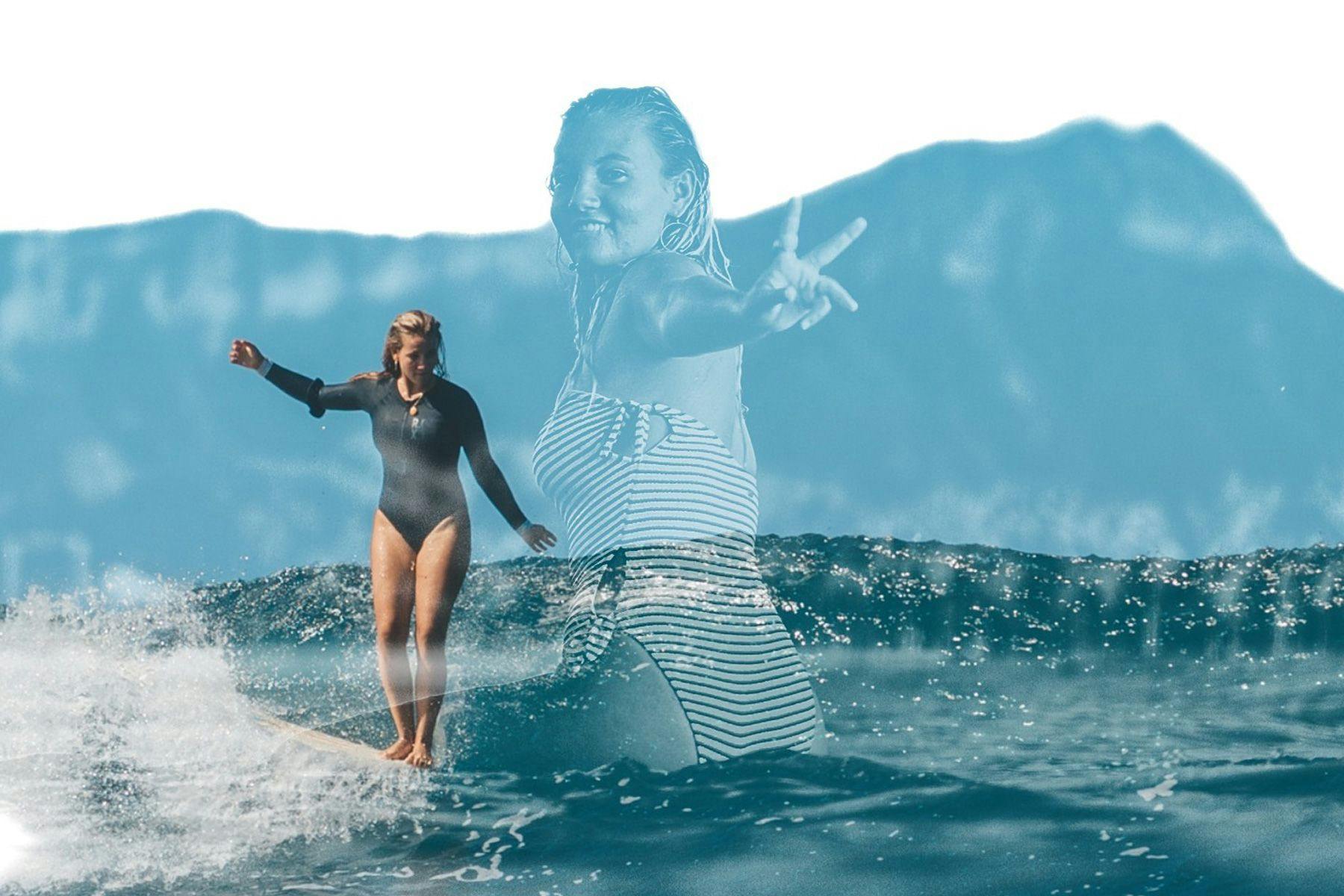PhotographySeeing Double In Waikiki

Tommy Pierucki’s Digi Doubles
Waikiki offers surf photographers the killer combo of a community of incredibly talented surfers riding waves in front of the instantly recognisable silhouette of Diamond Head – arguably surf culture’s most iconic backdrops. Most photographers would be content to line the two up, press the shutter button, and be done with it. It’d be a great image, after all. Not Tommy Pierucki, though. Tommy has quickly made a name for himself documenting the surf scene of Oahu’s South Shore, but also for creating eye-catching series of images by digitally manipulating his photographs and experimenting with different techniques. One such series is his take on the classic analogue technique of double exposing a single frame of film, layering two different images over each other to tell more a story. Surf Simply caught up with Tommy to dig into his Digi Doubles series, and find out more about his work and Waikiki’s surf scene.

For many years, Waikiki and the South Shore have been overshadowed on the international surf scene by the North Shore, but that isn’t so much the case any more. What’s changed?
The North Shore is definitely the surf mecca of the world, and there’s always such fantastic imagery coming out of there every winter. For me though, when I caught my first wave at Baby Queens twenty something odd years ago my heart just fell in love with Waikiki and the South Shore. At that time I wasn’t even living in Hawaii but I knew that I wanted to live there for the rest of my life and be around that.
There’re so many great longboarding waves here on the South Shore. It’s started to become a little more popular, and a bit more mainstream, and I think it’s a different aesthetic – longboarding versus shortboarding and big waves. I think there’s a shift that’s been happening over the last couple of years where people really want to see more longboarding, and that’s reflected in the WSL having a legitimate longboard world tour now. I think that’s played a big part in bringing more investment to the longboard scene also.
If you talk to the majority of people surfing they’ve all started on a longboard before perhaps moving on to a shorter board, so there’s so many longboarders out there now that there’s a lot of different talented people getting exposure here on the South Shore and all over the world. Longboarding’s taking off everywhere.

The surf scene and community that you document appears broad and inclusive, if not actually weighted in favour of female surfers. What is it that draws you to photographing women who longboard, in particular?
You take a look around at who’s surfing here and it doesn’t really matter what colour skin you have or what size person you are, where you come from, or whatever. There’s all sorts of people that surf. For me, my eye’s really drawn to longboarding. If you’re doing stylish things and beautiful manoeuvres that I’m able to capture, that really draws people’s attention to something that’s more freestylish, more expressive, and more like dancing on a wave. There’re so many different things that are beautiful about longboarding and that’s what has drawn me in. A lot of the longboarder ladies here have so much grace and style and power, and that’s really what attracts my lens. Portraying some of those stylish longboarders – big, small, black, white, it doesn’t matter – I just love to see the beauty in surfing in so many different types of people.

What makes Waikiki such an exciting location as a surf photographer?
Waikiki is iconic. It’s the birthplace of modern surfing, where Duke Kahanamoku started surfing and sharing the sport with the world. You have so many talented people that have been surfing these waves for so many years, but it’s only more recently that there’s a little bit more attention on it. There’s such an incredible backdrop with all the hotels right there on the shore, a beautiful strip of sand, and the iconic Diamond Head. Having Diamond Head as a backdrop is just one of the most beautiful things in the world.

Although you could easily settle for photographing great surfers in an iconic setting, you frequently manipulate your images as in this Digi Doubles project. What drives that creativity?
The Digi Doubles inspiration came from a lot of my friends who shoot film photography, like John Hook, Lisa Tirimacco, Mike Borchard, and a few other photographers. They have such a great eye for shooting film and creating textures with local greenery and then laying over someone in a critical position on a wave, creating such beautiful imagery that it makes you swoon! I tried to shoot film for a little bit and it’s great but it’s just not what I’m attracted to. I’m much more of a digital guy. I think that me being a creative I wanted to pay homage to that and do a version of my own, which became the Digi Doubles series. I have such a huge library of photos of people surfing, not only noseriding or cross-stepping or turning but also simply in a beautiful scene, that I’m able to stack that on top of some great portraits of them that I’ve taken in the past. I choose from a large library and put stuff together. A lot of the images that I put together don’t ever make it to the public. I want to keep them few and far between because I really like being able to have the look I want for a particular person’s character. I don’t want to put something out for the sake of doing a Digi Double. It’s something that’s super special to me and I’m glad that people have enjoyed it because it’s great validation, but at the end of the day it’s just me being creative.

What was your journey to establishing yourself as one of the prime surf photographers at Waikiki?
It really started in January of 2018 when I bought my first camera and waterhousing. I had always taken my go-pro over to Sandy Beach to try to get pictures of the barrel in the early mornings, when the colours are best, and trying to shoot down the line of the barrel. I would also take my go pro with me when I went out surfing and take it off the nose of my board to try and capture some images out there because you see so many beautiful moments whilst surfing. You know when you close your eyes and capture a moment with your mind, and think “oh man, that was really pretty”? That’s what drove me to make my first purchase of a camera and waterhousing. Once I had that I would bug my friends – “are you going surfing? I want to shoot!” I just kept going. I went out to Queens a couple of times and took some photos of Toots, a long time Waikiki surfer. He’s just so stylish; he looks like a statue on a wave. I really loved the way the photos came out so I kept coming back and I got to know him and some of the other surfers there. I started surfing there a little bit more and met a whole group of really, really talented longboarders. Any time there were waves I would swim out. They would share my photos, and I would post my photos, and brands would recognise them and they would post them too. After a while I had an opportunity to go to a couple of international surf contests that the WSL were holding, just to do my thing there, and that’s what started a lot of my growth. I’m a natural networker so started reaching out to people looking to do more work. I kept going to surf contests and kept shooting. There’s been a lot of me just putting in the time and learning more about my camera and where to sit, and which lenses to use to create the shot I was looking to get. Editing is always a journey and never a destination. It’s one of things that’s always going to evolve. The whole experience has never got old for me. It’s the same stoke to catch a wave as it is to get the shot, so I split my time between the two. When I go on surf trips with friends, my friends bug me to surf more and say I need to surf more, but I want the content AND I want the waves! It’s one of those things that I’m constantly torn between.

As a transplant from the mainland U.S. photographing “classic” Hawaiian scenes and traditional cultural activities, do you feel a weight of responsibility in how you portray Hawaii and its culture in your work?
I don’t know if I’d go quite as far as to call it a weight of responsibility for how I portray Hawaii and it’s culture in my work, but I definitely have a reverence and respect for everyone and everything that’s come before me. I feel that my work is a celebration of all the things that I love and respect about this place, and hopefully that comes through and people can feel that and see that in my work. I want to do justice and do right by the culture and the community, and hopefully if I ever cross that boundary then people will call me out on it and I can do the right thing.

Longboarders from Hawaii, particularly the women, have been dominating the international contest circuit recently. What is it about your local scene that has nurtured this pool of talent so well?
It’s such a good thing to see women dominating the international contests and the local scene. This is definitely a lot more progressive society than it was, say fifty years ago, and I think that with the WSL introducing equal pay it’s definitely taking steps in the right direction. I feel that everybody deserves the same chance. Equality is an important thing.

You can see more of Tommy’s photography on his website pineapplesunrise.com or give him a follow on instagram @tommypierucki